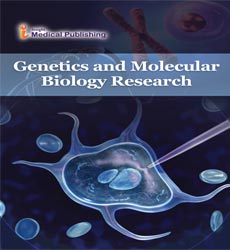Genetics: Key Role in Wound Healing
Abdul Imran*
Manipal University, India
Receipt date: July 27, 2020; Revision date: July 28, 2020; Acceptance date: August 04, 2020
Citation: Imran A (2020) Genetics: Key Role in Wound Healing. Genet Mol Biol Res Vol No: 4 Iss No: 2:29
Copyright: © 2020 Imran A. This is an open-access article distributed under the terms of the Creative Commons Attributions License, which permits unrestricted use, distribution and reproduction in any medium, provided the original author and source are credited.
Keywords
wound healing; genetics; protein ‘MG53’
Introduction
Very often people experiences cuts on foot or leg or any other part of body, how long does it take to show signs of healing? If it takes more than three weeks, physicians term it as “chronic wound.” Such non-healing wounds affect people and are usually found related to diseases like decreased circulation, diabetes, and neuropathy.
Genetics and Bone Healing: A study in 2013 showed, how genetics is related to bone healing. It was found changed genetic profiles actually cause delay in the healing of bone, due to misfired signal pathways. With bone repair, there are over 600 genes being expressed, which open the door for quite a few cases of misfiring. Researchers noted most issues involved various bone collagen types, growth factors, and certain cytokines.
Genetics and Wound Healing: Not only bone repair is associated with genetics, but also in 2008 researchers found that many genetic factors could cause delay in wound healing. They worked on number of rare genetic diseases, which involved Klinefelter Syndrome and TAP-deficiency syndrome; these maladies are found to be accompanied by impeded wound healing. Helping them understand what genes are involved for repair process and how much effect certain variations can have.
Gene identified that helps wound healing
The protein ‘ MG53 ’ has been identified to heal wound without scaring. This protein travels throughout the bloodstream helping body in fixing injuries of skin, heart, lungs, kidneys, etc. without causing scars. This could also help heal open wounds, minimizing recovery time post-surgery and reducing infection spread.
All animals carry this gene and it's almost identical in all species. MG53 fixes the cell and tissue damages that occurs on regular basis. Our simple daily activities, like walking or typing, causes injuries to the body. But usually these are repaired by MG53 before any serious harm.
Genetic variation may affect bacterial composition and healing of wounds
In chronic wounds, bacterial infection plays a major role in hindering the healing process. Various bacterial species are found in chronic wounds, but it remains unknown why such species are present in some wound infections and not in others. In order to address this quest, Phillips and researcher colleagues conducted a genome-wide association study so as to identify genomic loci associated with microbiome diversity in chronic wounds. It is the first research that identifies genetic determinants of wound microbiomes and healing in patients.
Specifically, it was found that genetic variation in the TLN2 and ZNF521 genes was associated with both the bacteria count observed in wound and common pathogens abundance (primarily Pseudomonas aeruginosa and Staphylococcus epidermidis). Furthermore, it was noticed Pseudomonasinfected wounds had fewer species, and were slower to heal. Biomarkers were used by researchers to predict the species count observed during infection. In all, results stated that genetic variation influences the types of bacteria that infect wounds and healing process.
Researchers also stated that the biomarkers for chronic wound microbiomes could be used in guiding treatment by giving information of which patients are at risk of developing particular types of persistent infections. Given that persistence of wound is associated with the development of multiple drugresistant pathogens, such biomarkers could be used for identifying which patients should receive early and forcussed treatment.
Additionally as per authors "This study demonstrates the ability to discover variants in individual ’ s genomes that explains the differences in the microorganisms which infect their wounds. This piece of information is expected to guide new understanding about the mechanisms of infection and healing, and the formation of predictive biomarkers that improve patient care".
Open Access Journals
- Aquaculture & Veterinary Science
- Chemistry & Chemical Sciences
- Clinical Sciences
- Engineering
- General Science
- Genetics & Molecular Biology
- Health Care & Nursing
- Immunology & Microbiology
- Materials Science
- Mathematics & Physics
- Medical Sciences
- Neurology & Psychiatry
- Oncology & Cancer Science
- Pharmaceutical Sciences
